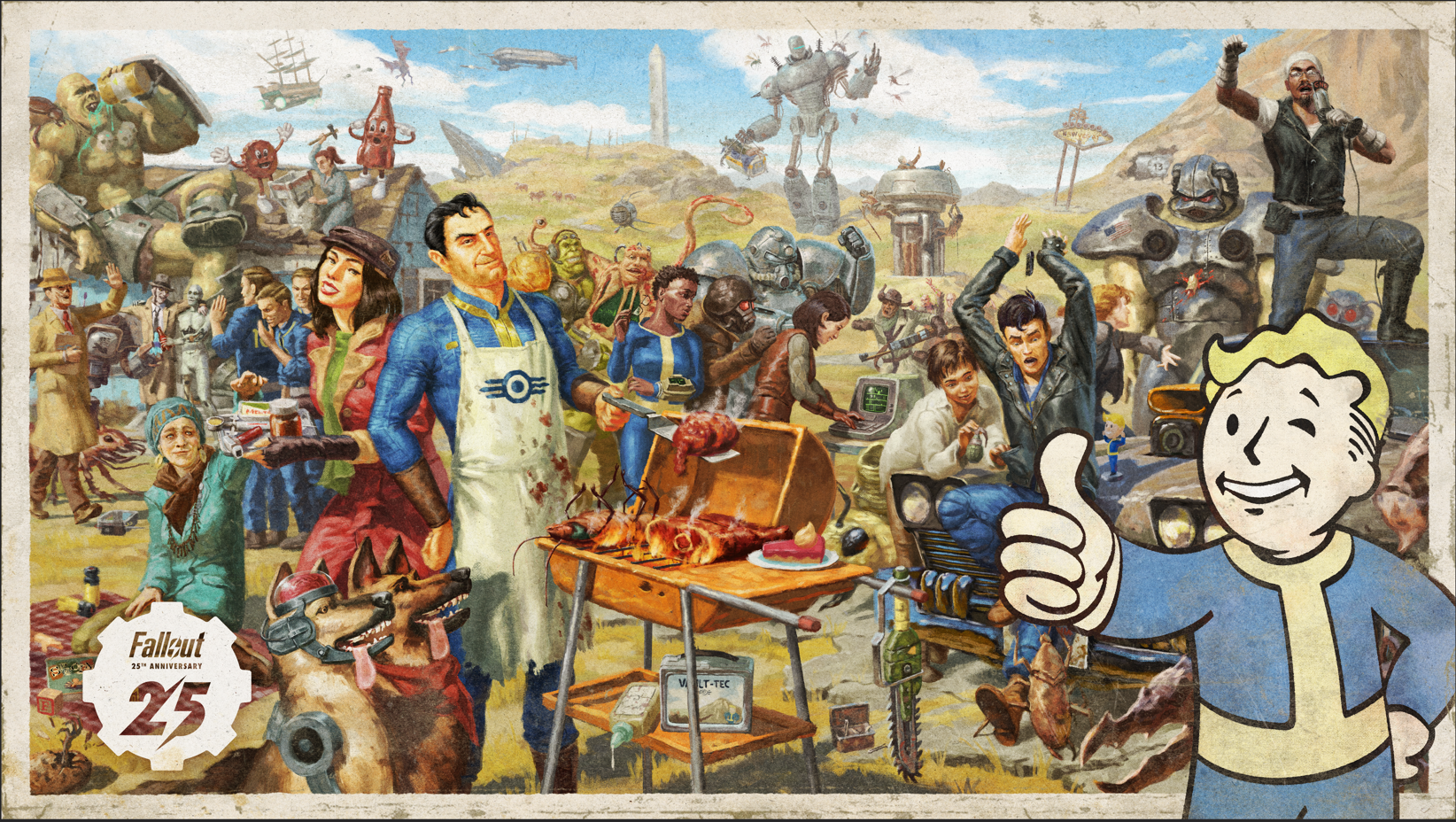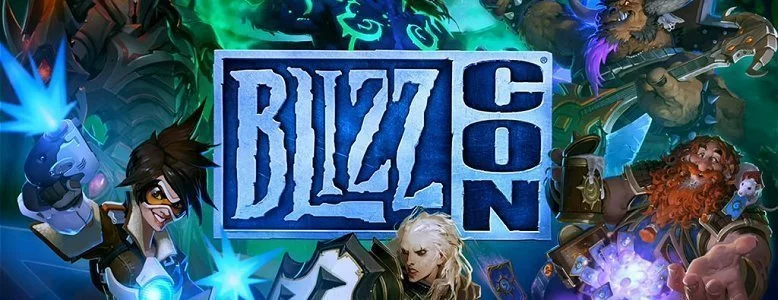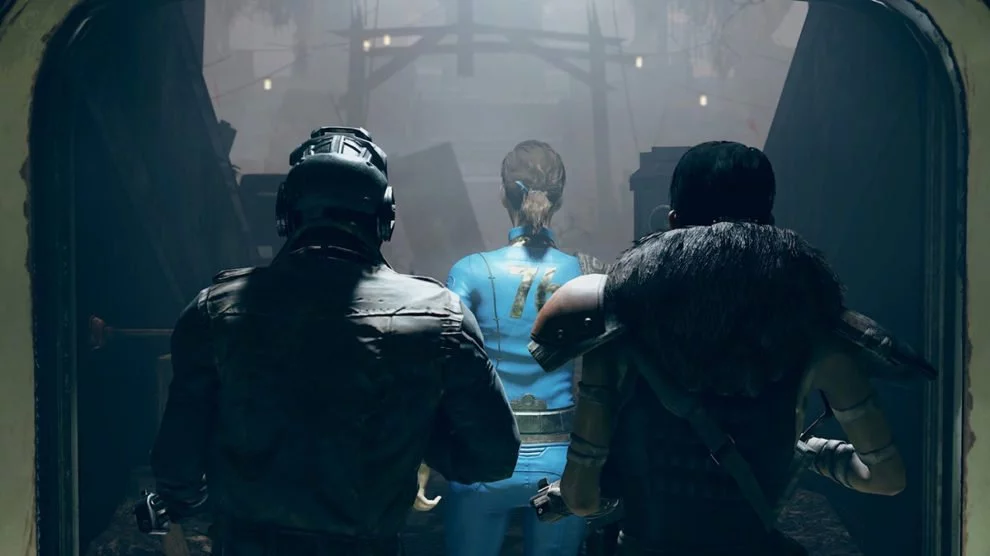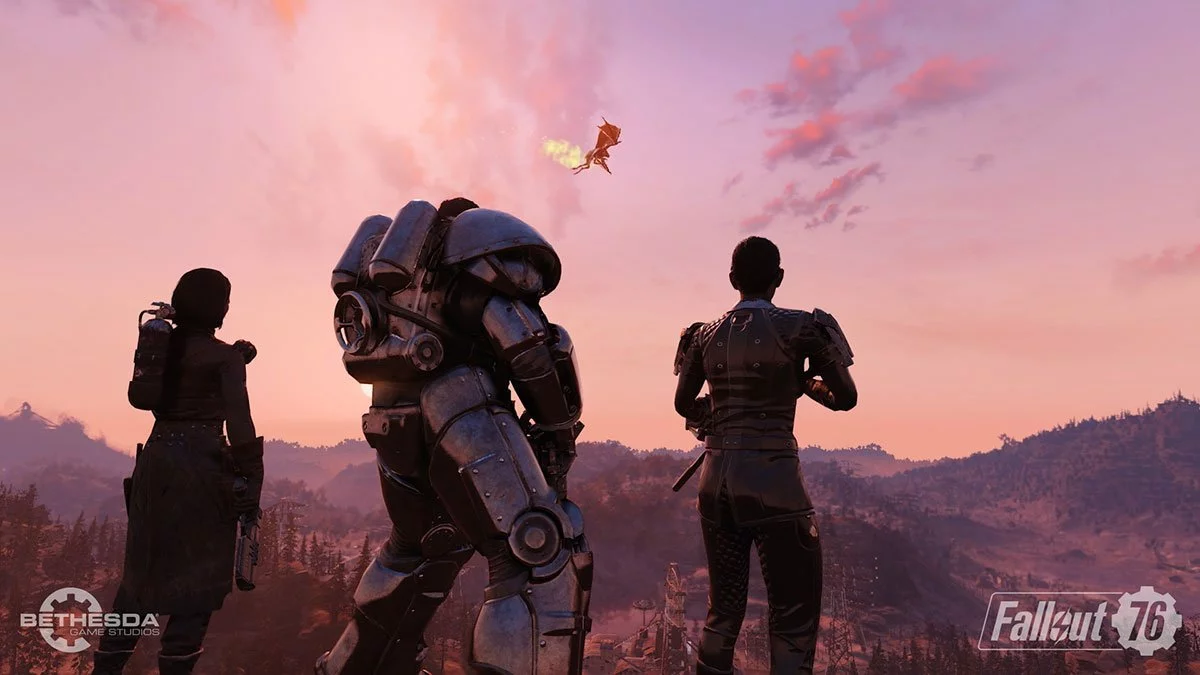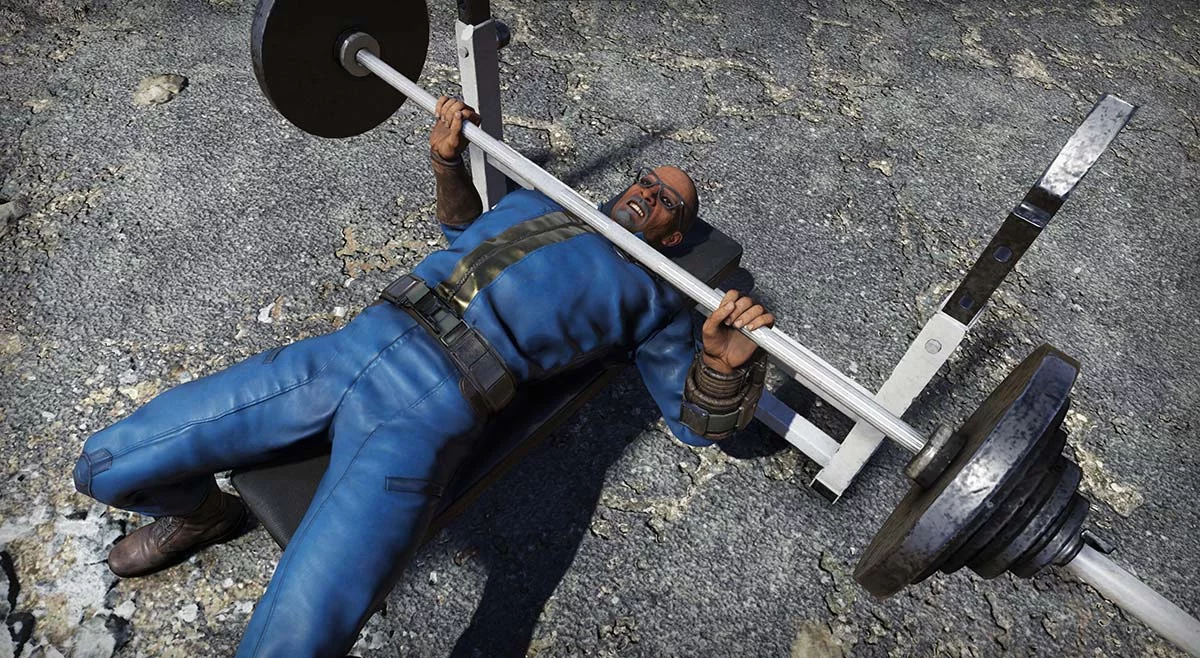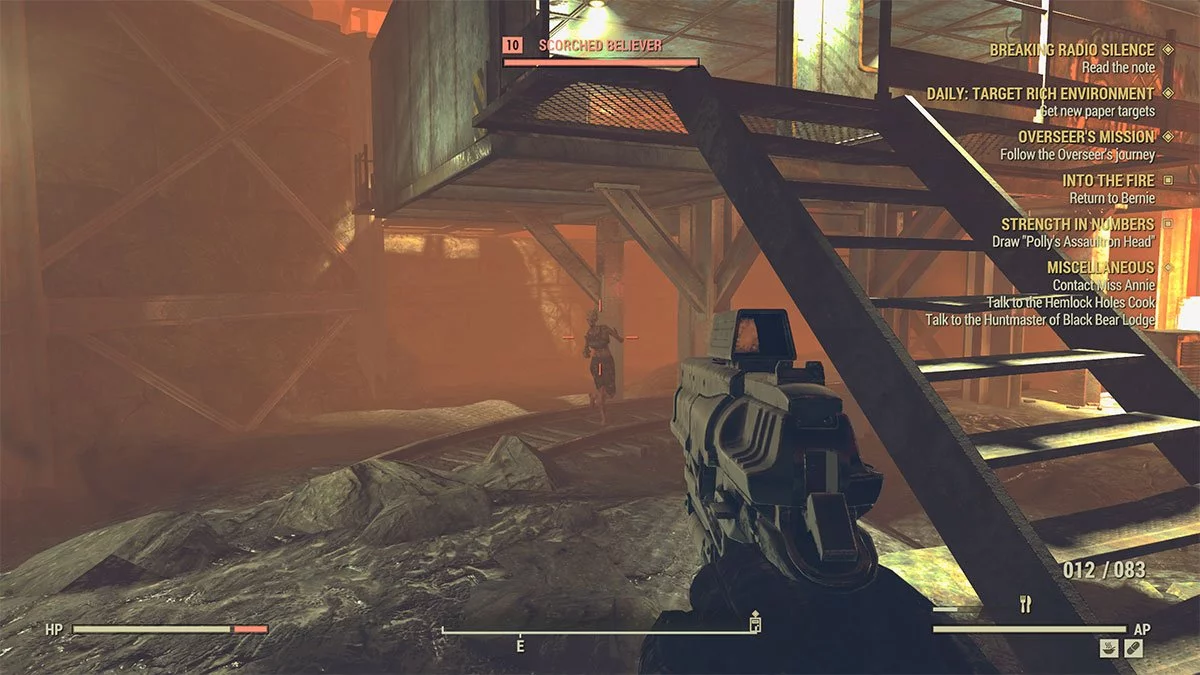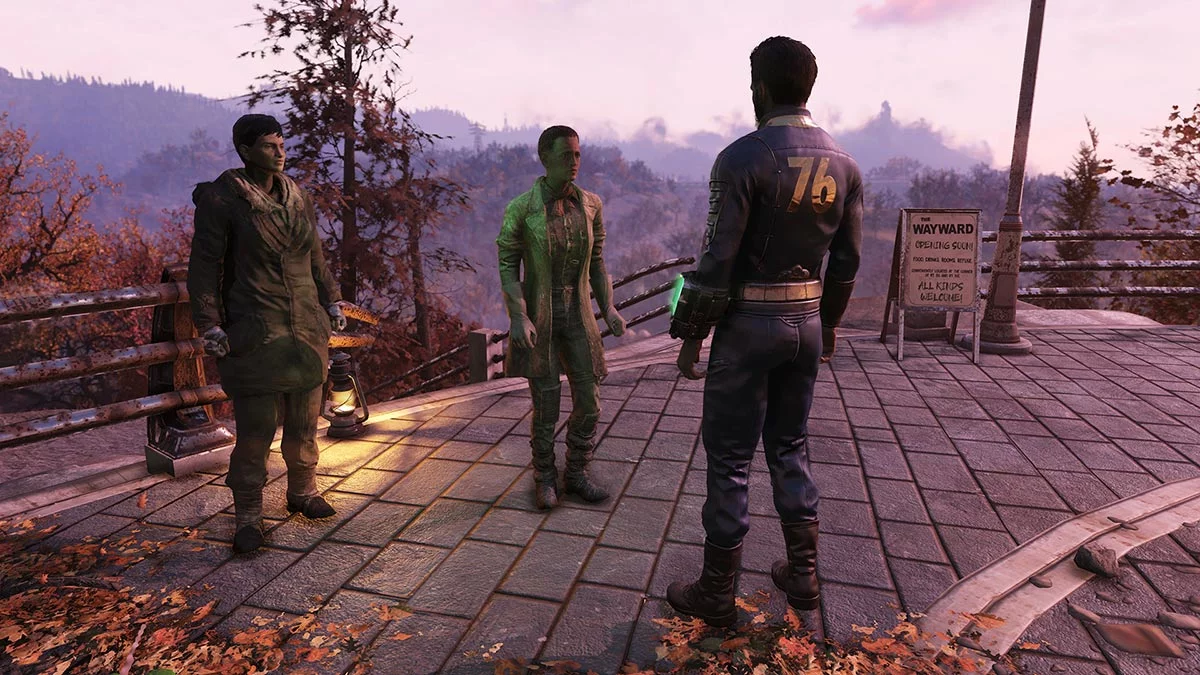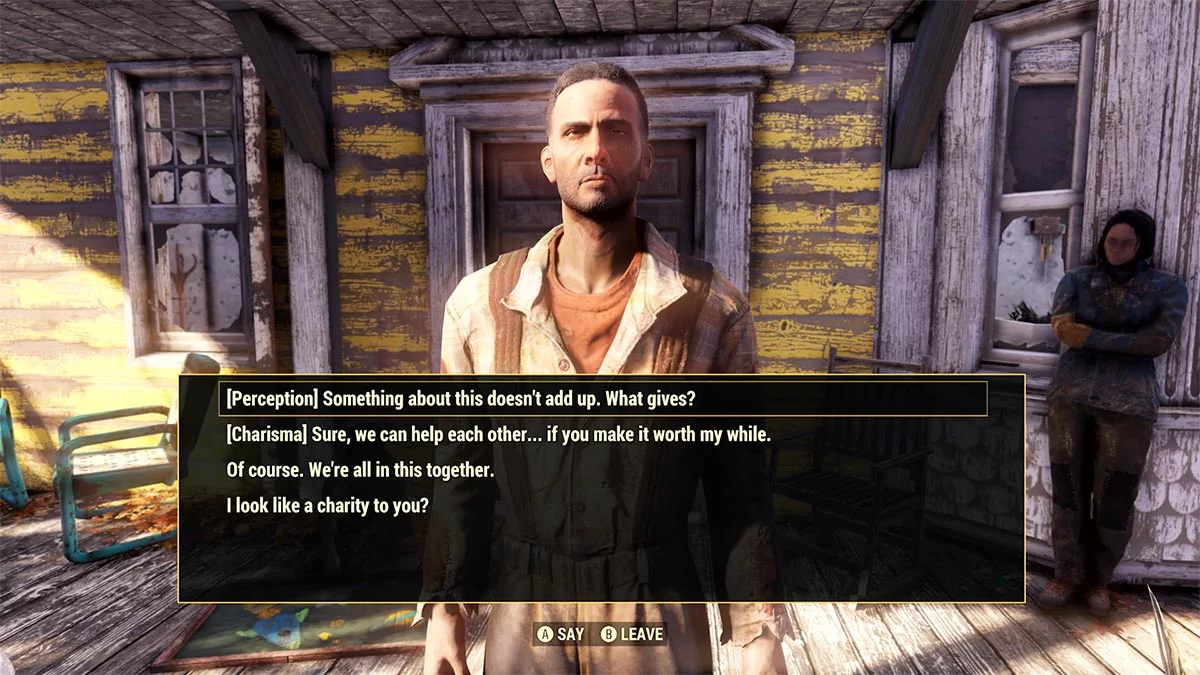Appalachia has changed a lot since you last visited, but is it worth returning to Fallout 76?
Fallout 76 was an absolute disaster when it launched back in 2018. The content was bland, the bugs were game-breaking and the microtransactions were atrocious. I wondered whether Bethesda would commit to the significant restructure required to salvage the foundations of a successful concept, or if it would let it fade away and chalk it up to a learning experience.
More than two years on, it resurfaced on my Xbox Series X recently through the rotating line-up of Game Pass promotions and I delved back in to find the answer. I returned to my abandoned wasteland wanderer – dressed as a paramedic/cop hybrid for some reason – to discover Fallout 76 has been completely overhauled. It reminds me of the second coming of No Man’s Sky in how it has been able to reinvent itself by evolving to better match the original pitch to players.
After several years of patches, Fallout 76 is now much closer to how I originally envisioned a multiplayer adaptation. The bugs and glitches have been plastered over; they bobble to the surface fairly regularly, but it’s more comedic than destructive now, and technical foibles no longer dominate the conversation. That makes it actually playable this time around, but it is the entirely new approach to content where Fallout 76 has really turned the tides.
The Wastelanders expansion is what the game should have been in the first place. It reintroduces NPCs — actual people — to replace the original cast of middling robots. In my recent playthrough, I was never really sure if I was embarking upon an original or a newer quest. Essentially, if it was triggered by a person, it was from the expansion. If a robot intervened at a crucial junction, it was original, but even those have been given a new lease on life with the injection of more spirited characters to freshen them up. The new main missions are a step above the rinse and repeat robot-generated formula, but with updates across the board, the overall package is much more compelling.
With its inclusion in Xbox Game Pass, Fallout 76 has found a new player base unaware of its troubled upbringing. It was caught in the no man’s land between premium paid product and free-to-play reliant on a subscription and overpriced cosmetics – it tried to do both, and above all else, that is why it was dead on arrival and quickly discarded into the discount bin by retailers.
Fallout 1st: PvE pay-to-win?A Fallout 1st subscription provides access to a number of features that are borderline pay-to-win. First, the $22.95 AUD/month or $179.95 AUD/year subscription provides access to 1,650/month worth of in-game currency called Atoms, which can be used to purchase items like repair kits that are incredibly useful to patch up weapons or armour. The subscription also delivers a saving grace in the form of a Survival Tent that can be placed — and re-placed — almost wherever you choose, providing access to a stash box and an all-important exclusive Scrapbox that offers up unlimited storage of junk (and, therefore, all the items that can be crafted with the extra materials). We’re not sold on needing the subscription, but it certainly makes crafting and setting up camp much easier — if you can afford it. |
I still think Fallout 76’s cosmetic shop is a bit much, and I don’t agree with the 12-month subscription. It does make things easier, hence its pay-to-win stigma, but its main hook is private worlds for you and your friends; at this late stage, I doubt that’s of much use. I prefer playing in public worlds, where I have occasionally joined with random players to complete a public event, and then continued on my way as a lone wolf — aside from those occasional events, it’s actually still a fairly private world. That is partially because it’s how I prefer to play, but also down to the structure of Fallout 76, which really favours playing by yourself, with other people sometimes in the vicinity.
The public matchmaking system is simple and easy to use; enabling you to connect with players within the same world to complete events that otherwise would be nearly impossible. These are more common now, and I was surprised how often I enjoyed joining them; procrastinating from completing the great many active quests that littered my objective screen. It’s fair to say I was out of my depth and carried at times, but these brief glimpses of teamwork deliver a new take on the Fallout experience.
While I primarily play Fallout 76 as a single-player game, the series has always felt very ‘you against the world’. Despite pockets of vault dwelling survivors, the NPCs are established with an all take, no give mentality, so previous games left you feeling alone, while surrounded by AI characters. These events and multiplayer encounters are what I thought Fallout 76 would be; it’s you and a small cohort of allies working together to survive and prosper. You aren’t committed to an entire campaign with these random vault-mates, but you aren’t alone anymore; at least not all the time.
While there is finally a sense of camaraderie — easy come, easy go — once the event is done, you are largely back to a lonely existence following the main quest line. Fallout 76 could theoretically be played entirely cooperatively, but to complete all the main quests with friends, you really need to put your entire lives on hold for a couple of weeks and only play together; that’s not going to happen. As soon as one of you progresses beyond the other, you have no choice but to let each other go.
That problem isn’t inherent to Fallout 76. It’s a blight on all multiplayer RPGs, and nobody has really found a solution yet. Fallout at least makes it possible to reunite, as enemies scale to each player, but it’s fairly pointless. At Level 7 and Level 75(-ish), Stevivor Editor-in-Chief Steve Wright and I were able to play together and face enemies appropriate to each of us. The same enemies, mind you.
However, Steve had already completed those quests, long ago, and had no incentive to replay them. Some of them also didn’t make sense from his vantage point, with a narrative much further progressed, which conflicts with the idea of sharing a world. XP doesn’t really matter at that point, and the mission structure is still very single-player focused. It doesn’t help that the second player can’t clearly see the objectives of their co-op partner, and have to follow blindly. While the drop-in public events are exactly what I expected from multiplayer Fallout, the core experience still feels like a solo game that can be played cooperatively as an optional extra.
While you can get by without the benefits the Fallout 1st subscription provides, it does make for a more challenging experience. The paid Scrapbox makes the creation of your C.A.M.P., or personal home, much easier. You don’t need to scrounge for wood, metal or concrete when you can over-encumbered yourself at a new location and then instantly spawn your Survival Tent to collect it all with ease. Anyone can use another’s Survival Tent as a storage dump and also a fast travel marker, and the same is true of another player’s C.A.M.P — but visiting might scratch the carpentry itch within your character.
In their base form, C.A.M.P.s are for crafting stations, item storage and that’s about it. Players at level 100 or above, especially, seem to use them for much more, finding ideal positions within Appalachia (for the views, of course) and decking out near mansions with Bobblehead and Magazine storage racks, and mounted Deathclaws for some variety. They’re worth visiting for function, for inspiration, or to try to form bonds with other players. If you’ve dabbled in Fallout 4’s settlement functionality, you’ll have a decent handle on C.A.M.P.s.
Without the subscription, I didn’t bother with my C.A.M.P. outside of the minor mandatory crafting. It all seemed like far too much work for little reward. With the subscription — I still didn’t bother to the extent of other players — but it became much easier with my supplies and storage items instantly accessible. It’s still not enough to make it worth committing to a year, so maybe dabble for a month if Fallout 76 really tickles your fancy. Considering it’s on a comeback trail and isn’t a global sensation, Fallout 76’s longevity would have been better served by abandoning Fallout 1st and rolling the key features into the base game for everyone.
Alone or with other players, Appalachia is more alive this time around. While the company of real players feels sparse at times, the return of NPCs and more meaningful quests make this a much more engaging world to explore. Combat is still clunky, but real-time gunplay will never be the strong point of Fallout, and it certainly feels much more adept now.
I am far more confident in tackling whatever creature falls my way, but am equally content to continue to run past them to continue to progress a quest or explore an area of intrigue. That is where Fallout 76 has really recovered. It’s a world worth exploring with quests that provide a greater sense of accomplishment. The core storyline still feels developed for a single-player, occasionally with a little help from your friends, but the public events deliver a sense that you are not always in this alone. Bouncing between the two strikes a balance between traditional Fallout and a multiplayer take, which is much closer to the original selling point. If you want an entirely solo experience, you are still better off looking towards Fallout 4, Fallout 3 or New Vegas, but if you want something a little different and were put off in 2018, it’s worth revisiting the more complete version of Fallout 76 in 2021.
Fallout 76 is currently available on Windows PC, Xbox One and PS4, playable on Xbox Series S & X (with FPS Boost) and PS5. It is also on Xbox Game Pass on both console and PC.
This article may contain affiliate links, meaning we could earn a small commission if you click-through and make a purchase. Stevivor is an independent outlet and our journalism is in no way influenced by any advertiser or commercial initiative.


